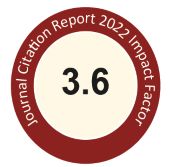Abstract
Increased leptin resistance and methylglyoxal (MG) levels are observed in obese patients. However, whether MG deposits contribute to leptin resistance, oxidative stress, and inflammation in peripheral tissues remains unclear. In addition, the edible fruit of Indian gooseberry (Phyllanthus emblica L.) contains abundant bioactive components such asvitamin C, β-glucogallin (β-glu), gallic acid (GA), and ellagic acid (EA). Water extract of Indian gooseberry fruit (WEIG) and GA has been shown to improve cognitive decline by suppressing brain MG-induced insulin resistance in rats administered a high-fat diet (HFD). Accordingly, this study investigated the functions of WEIG and GA in inhibiting MG-induced leptin resistance, oxidative stress, and inflammation in the peripheral tissues of HFD-fed rats. The results showed that MG, advanced glycation end products (AGEs), and leptin resistance accumulation in the liver, kidney, and perinephric fat were effectively restored by elevated glyoxalase-1 (Glo-1) activity after WEIG and GA administration comparable to that of alagebrium chloride (positive control) treatment in HFD-fed rats. Furthermore, WEIG and GA supplementation increased adiponectin and antioxidant enzymes (glutathione peroxidase, superoxide dismutase, cata-lase) and decreased inflammatory cytokines (IL-6, IL-1β, TNF-α) in the peripheral tissues of HFD-fed rats. In conclusion,these findings demonstrated that MG may trigger leptin resistance, oxidative stress, and inflammation in peripheral tissues, which could be abolished by WEIG and GA treatment. These results show the potential of P. emblica for functional food development and improving obesity-associated metabolic disorders.
Recommended Citation
Chen, Sheng-Yi; Huang, Yue-Ning; Lin, Jer-An; and Yen, Gow-Chin
(2024)
"Effect of Indian gooseberry extract on improving methylglyoxal-associated leptin resistance in peripheral tissues of high-fat diet-fed rats,"
Journal of Food and Drug Analysis: Vol. 32
:
Iss.
1
, Article 4.
Available at: https://doi.org/10.38212/2224-6614.3494
Creative Commons License

This work is licensed under a Creative Commons Attribution-Noncommercial-No Derivative Works 4.0 License.
Included in
Food Science Commons, Medicinal Chemistry and Pharmaceutics Commons, Pharmacology Commons, Toxicology Commons


Abstract Image